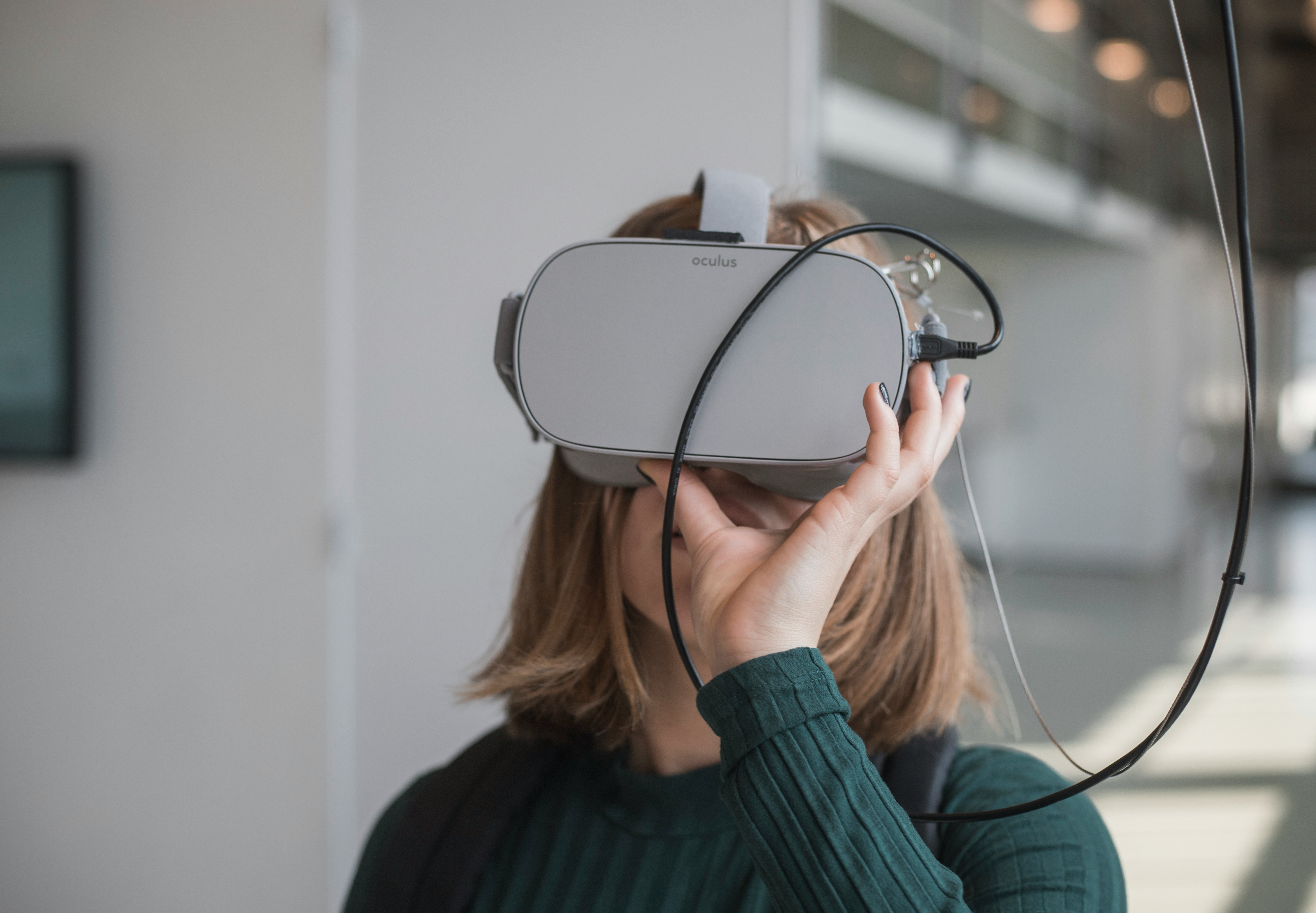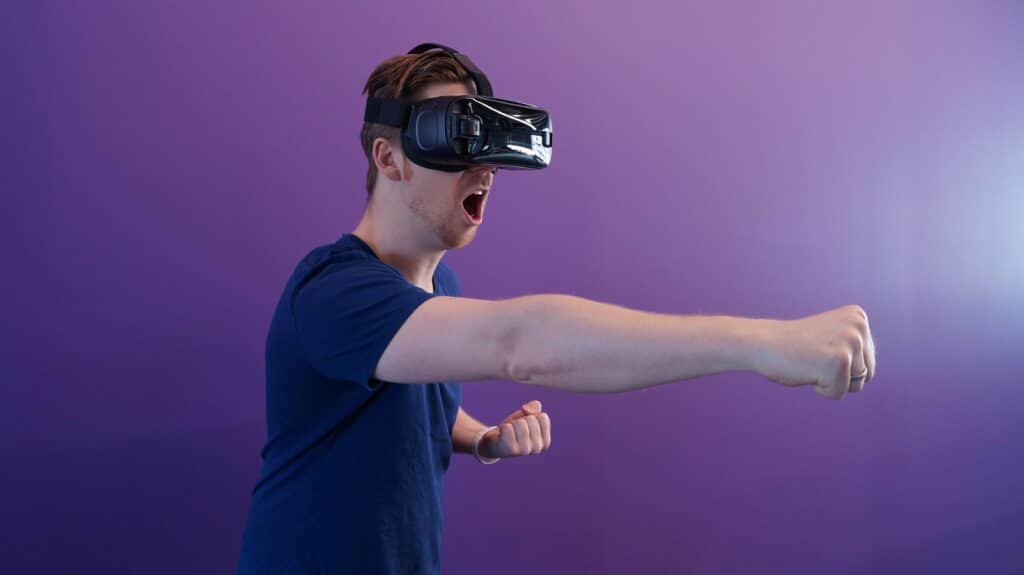5 Game Changing Ways To Introduce VR Into Your Business

Virtual and augmented reality have been popular talking points since the 90’s; however the execution of the ground-breaking concepts have never been smooth sailing.
In 2012, Palmer Luckey, co founder of Oculus and designer of Oculus Rift, ignited the latest VR revolution. At the age of 24, he is currently ranked #22 on Forbes’ 2016 list of America’s richest entrepreneurs under 40.
2016 was the year that companies such as Google and Oculus (who partnered with Samsung to develop their first version of VR, Oculus Rift), began to distribute their products to the public.
VR is finding its way into personal and commercial markets; though it’s still early days, the future potential of this technology could benefit the majority of businesses.
This post will outline 5 ways that you can get ahead by embracing VR in the workplace.
1. Training
VR is completely adapting training processes for the better. First hand experience without the risk of complications is now available in the form of a headset.
In 2014 the first hospital trialled streaming a 360 video of an operation that all staff could immerse themselves in via the Medical Realities website. A one minute delay was incorporated into the filming incase of a fatality.
Also in 2014, oil companies started to train their oil rig workers in a virtual world. The 2013 fatality rate in the oil and gas extraction industry was 3.2 deaths per 100,000 workers according to the Bureau of Labor Statistics. That is about eight times higher than the average fatality rate in all other U.S. industries. VR allows employees to learn by experience without any added danger.
2. Walkthroughs & Prototyping
This would work for any product or design based company. Previously when at a meeting, ideas would be flowing and all those involved would work to visualise how your latest product will look, (this can take a while depending on size and imagination of your team). Now, you can collaborate with designers to create a VR prototype, ensuring that everyone’s on the same page.
Another example would be VR car experiences. Car manufacturer Audi, teamed up with Samsung to offer smartphone users the ability to browse and in some cases virtually drive Audi vehicles.
VR can also be a helpful tool for letting agents or landlords when showing clients new office spaces, or houses. Virtual Reality allows viewers to see spaces whilst empty and what it’d look like furnished, instantly. VR allows you to demonstrate the potential finished product in the early stages of business; increasing efficiency.
3. Sales
Could VR be the future of retail? We’ve already seen online shopping storm ahead of it’s more traditional counterpart.
This idea of virtual shopping could create a social buying experience but in a virtual world.
In April 2016, IKEA, the Swedish furniture supplier launched a pilot of a virtual reality app called, the ‘IKEA VR Experience.’
Using an HTC Vive headset, the IKEA VR Experience brings the user into a virtual IKEA kitchen in real world size. Consumers can use the app to explore one of three differently-styled kitchen room settings, adjusting the colour with just one click and adapting perspectives by either shrinking or stretching yourself to move around the kitchen at the size of a 3.3 foot-tall child or a 6.4 foot-tall adult.
Jesper Brodin, Managing Director at IKEA of Sweden and Range & Supply Manager at IKEA Group says: “Virtual reality is developing quickly and in five to ten years it will be an integrated part of people’s lives. We see that virtual reality will play a major role in the future of our customers. For instance, someday, it could be used to enable customers to try out a variety of home furnishing solutions before buying them.”
Another example of VR being used in retail was in 2015. Tommy Hilfiger launched a 360 VR film experience, streaming his Fall Collection runway show. Using the Oculus headset, Hilfiger gave viewers a front row three dimensional experience of the catwalk at Manhattan’s Park Avenue Armory.
4. Meetings
Ever find it hard to get everyone you need in the same room at the same time? Spend a lot of money and time traveling around the UK or the world because your company has multiple regional/ international offices?
VR can give you the feeling of having an intimate meeting whilst miles apart. A survey, in a report from Dell Inc., Intel Corp. and consultants Penn Schoen Berland, found that 57% of employees around the world prefer face-to-face conversations with colleagues. These stats suggest that VR could improve relationships within companies by giving the illusion of intimate meetings.
VR meetings allow for proper eye contact, subtle cues such as interpersonal distance, and eventually virtual touch and smell.
5. Drones
VR combined with drone allows users to have a first-hand birdseye view experience. No longer will you need to use a monitor to guide your drone. By using a headset; you can now immerse yourself in the landscape.
Whether you use drone for production, security, architecture, construction, engineering, agricultural or other purposes, utilizing VR alongside your drone can increase the level of control and generally allow for a much smoother flight.
So, I guess the real question is… when will your business be introducing VR?

Your Industrial Story
Starts Here
Press The Button. Make The Call. Transform Your Media.

